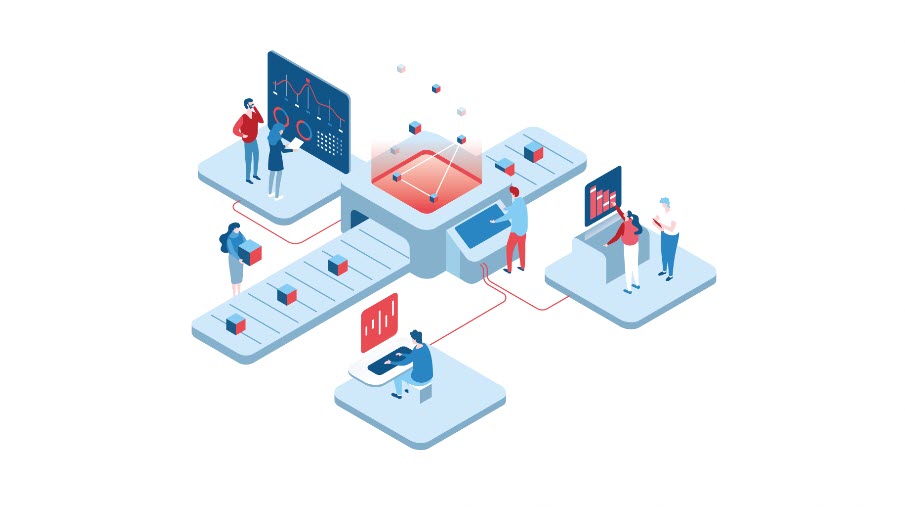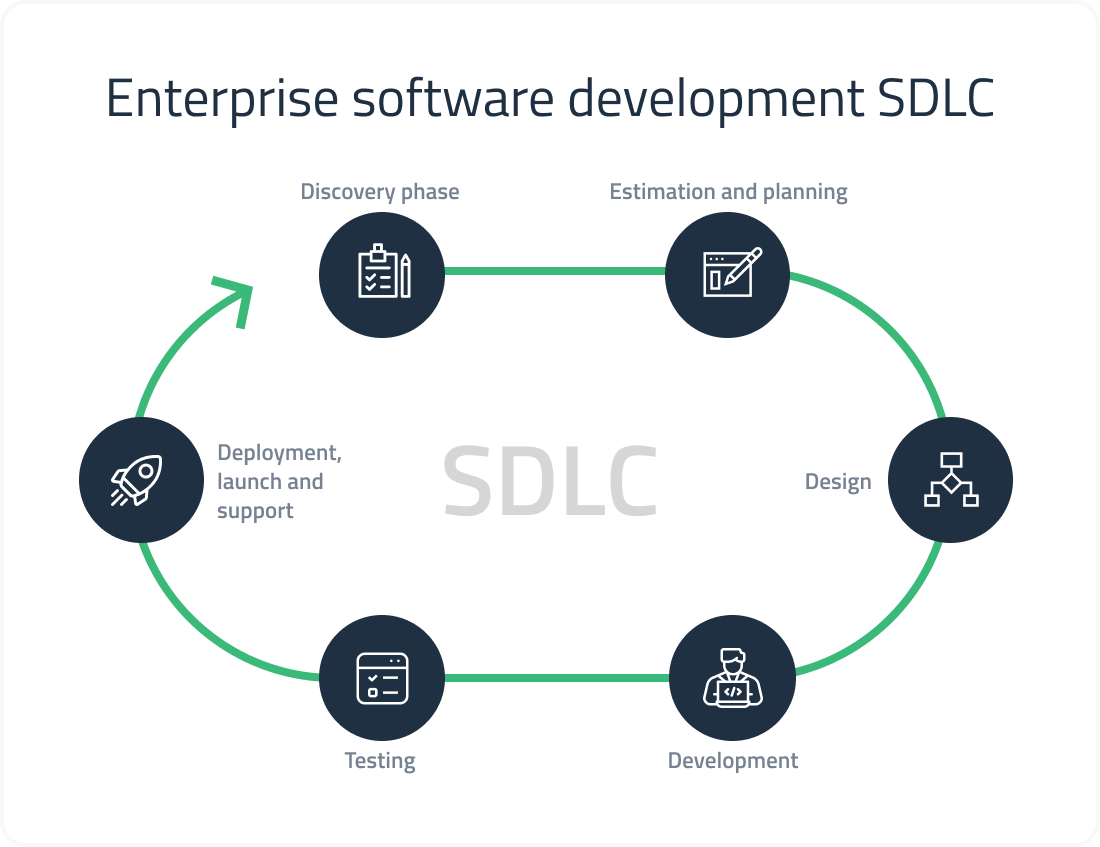Enterprise software development encompasses the core phases, essential technologies, and best practices that drive modern businesses forward. Dive into this dynamic field with us as we explore the intricacies and innovations shaping the industry.
From defining the importance of enterprise software to delving into the vital phases of development, this overview sets the stage for a comprehensive understanding of the subject.
Overview of Enterprise Software Development

Enterprise software development refers to the process of creating software applications specifically designed to meet the needs of large organizations or businesses. These applications are complex, scalable, and tailored to support various business functions and processes.
Enterprise software plays a crucial role in modern businesses by enhancing efficiency, productivity, and collaboration among employees. It helps streamline operations, manage data effectively, and improve overall decision-making processes within an organization.
Key Characteristics of Enterprise Software
- Scalability: Enterprise software is designed to handle large volumes of data and users, allowing businesses to grow without performance issues.
- Security: Due to the sensitive nature of business data, enterprise software prioritizes robust security measures to protect against cyber threats and unauthorized access.
- Integration: Enterprise software applications are often integrated with other systems and platforms to ensure seamless communication and data flow across the organization.
- Customization: Enterprises have unique requirements, so software solutions are highly customizable to meet specific business needs and workflows.
Examples of Popular Enterprise Software Solutions
- Customer Relationship Management (CRM) software like Salesforce, which helps businesses manage customer interactions and sales processes.
- Enterprise Resource Planning (ERP) systems such as SAP and Oracle, which integrate various business functions like finance, human resources, and supply chain management.
- Collaboration tools like Microsoft Teams and Slack, which facilitate communication and collaboration among employees working remotely or in different locations.
Phases of Enterprise Software Development
In enterprise software development, the lifecycle consists of several crucial phases that ensure the successful delivery of a high-quality software product. Each phase plays a vital role in the overall development process, from gathering requirements to testing and deployment.
Requirements Gathering
Requirements gathering is the initial phase of enterprise software development, where the development team works closely with stakeholders to understand and document the project’s requirements. This phase is critical as it sets the foundation for the entire development process, ensuring that the software meets the needs and expectations of the end-users.
- Engage with stakeholders to gather and analyze requirements.
- Document functional and non-functional requirements.
- Ensure clarity and alignment on project goals and objectives.
Design and Architecture
The design and architecture phase focuses on creating a blueprint for the software solution based on the gathered requirements. This phase involves defining the system’s structure, components, modules, and interfaces to ensure scalability, performance, and maintainability.
- Create detailed design documents outlining the software architecture.
- Define technology stack, frameworks, and patterns to be used.
- Ensure alignment with best practices and industry standards.
Testing and Deployment
Testing and deployment are crucial phases that ensure the software product meets quality standards and is ready for production release. Testing involves validating the functionality, performance, and security of the software, while deployment focuses on making the software available to end-users.
- Develop test cases and perform various types of testing (unit, integration, regression, etc.).
- Conduct user acceptance testing to validate the software against user expectations.
- Deploy the software to production environments and ensure a smooth transition.
Technologies and Tools in Enterprise Software Development

In the world of enterprise software development, a variety of technologies and tools are utilized to create robust and scalable solutions for businesses.
Common Programming Languages
Programming languages play a crucial role in enterprise software development, with some of the most commonly used languages including:
- Java: Known for its platform independence and scalability, Java is widely used in building enterprise applications.
- C#: Developed by Microsoft, C# is popular for creating Windows applications and services.
- Python: With its simplicity and versatility, Python is often used for rapid development and data analysis in the enterprise setting.
Role of Frameworks
Frameworks provide a foundation for developers to build upon, accelerating the development process by offering pre-built components and structures. Some popular frameworks in enterprise software development include:
- Spring Framework: Widely used for building enterprise Java applications, Spring provides comprehensive infrastructure support.
- .NET Framework: Developed by Microsoft, .NET offers a range of tools and libraries for building Windows applications and web services.
- React: A JavaScript library for building user interfaces, React is commonly used in enterprise web development.
Significance of Version Control Systems
Version control systems are essential in managing the codebase of enterprise software projects, allowing developers to track changes, collaborate effectively, and maintain code integrity. Some popular version control systems include:
- Git: Known for its distributed nature and branching capabilities, Git is widely used in enterprise software development.
- SVN (Subversion): An older version control system, SVN is still used in some enterprise settings for its centralized repository model.
Database Management Systems
Database management systems (DBMS) are crucial for storing and managing data in enterprise applications. Commonly used DBMS in enterprise software development include:
- Oracle Database: Known for its scalability and reliability, Oracle Database is a popular choice for large-scale enterprise applications.
- Microsoft SQL Server: Developed by Microsoft, SQL Server is commonly used in Windows-based enterprise environments for its robust features.
- MySQL: An open-source relational database management system, MySQL is widely used in web applications and smaller enterprise setups.
Best Practices in Enterprise Software Development

When it comes to enterprise software development, following the best practices is crucial to ensure successful project delivery. Let’s explore some key practices that can help teams achieve their goals effectively.
Agile Methodologies in Enterprise Software Development
Agile methodologies, such as Scrum and Kanban, are widely used in enterprise software development due to their iterative and collaborative approach. These methodologies allow teams to adapt to changing requirements and deliver high-quality software in a timely manner.
Importance of Scalability and Security, Enterprise software development
Scalability and security are paramount in enterprise software design. Scalability ensures that the software can handle increasing workloads and user demands, while security measures protect sensitive data and prevent cyber threats. By prioritizing scalability and security, organizations can build robust and reliable software solutions.
Continuous Integration and Continuous Deployment (CI/CD)
CI/CD practices automate the testing, integration, and deployment processes, allowing teams to deliver code changes quickly and frequently. By implementing CI/CD pipelines, developers can ensure that new features are thoroughly tested and deployed to production without manual intervention, enhancing efficiency and reducing errors.
Effective Collaboration Among Development Teams
Collaboration is key to the success of enterprise software projects. Encouraging open communication, sharing knowledge, and fostering a culture of teamwork can lead to better outcomes and innovation. By promoting effective collaboration among development teams, organizations can leverage the diverse skills and expertise of their members to deliver high-quality software solutions.
Outcome Summary
As we conclude our exploration of enterprise software development, we reflect on the key takeaways and insights shared throughout this discussion, highlighting the critical role this field plays in shaping the future of business technology.
